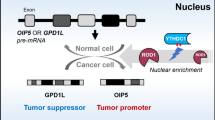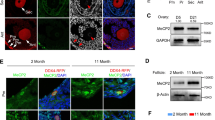Abstract
The mechanism of action of zearalenone (ZEA) in inducing germ cell tumors is unclear, and little is known about the change in the transcriptome of germ cells after ZEA exposure. To explore the molecular basis of the ZEA oncogene, we examined the median lethal concentration (50 μmol/L) and pro-apoptotic effect of ZEA on TM3 Leydig cells by MTT and TUNEL assay. Subsequently, we investigated the genetic changes in the transcriptome of TM3 Leydig cells exposed to 50 μmol/L ZEA. The transcriptome sequencing results show that 772 genes are significantly down-regulated, while 204 genes are significantly up-regulated. Gene ontology (GO) enrichment analysis shows that ZEA has a major effect on the connective function, cell composition, cell cycle, and energy metabolism of the TM3 Leydig cells. Using the results of the GO and Kyoto Encyclopedia of Genes and Genomes (KEGG) enrichment analyses, we select the Ras and Rap1 signaling pathways that are closely related to the occurrence of cancer. The differentially expressed genes visualized in the KEGG pathway were selected for RT-qPCR differential gene expression validation. The results show that the gene expression results are consistent with the transcriptome sequencing results. This study thus provides a theoretical molecular basis for the mechanism of ZEA carcinogenesis.







Similar content being viewed by others
References
Buday L, Downward J (2008) Many faces of Ras activation. Biochim Biophys Acta 1786:178–187. https://doi.org/10.1016/j.bbcan.2008.05.001
Chalkiadaki G, Nikitovic D, Katonis P, Berdiaki A, Tsatsakis A, Kotsikogianni I, Karamanos NK, Tzanakakis GN (2011) Low molecular weight heparin inhibits melanoma cell adhesion and migration through a PKCa/JNK signaling pathway inducing actin cytoskeleton changes. Cancer Lett 312:235–244. https://doi.org/10.1016/j.canlet.2011.08.016
Cheraghi S, Razi M, Malekinejad H (2015) Involvement of cyclin D1 and E2f1 in zearalenone-induced DNA damage in testis of rats. Toxicon 106:108–116. https://doi.org/10.1016/j.toxicon.2015.09.018
Chin L, Tam A, Pomerantz J, Wong M, Holash J, Bardeesy N, Shen Q, O'Hagan R, Pantginis J, Zhou H, Horner JW, Cordon-Cardo C, Yancopoulos GD, DePinho RA (1999) Essential role for oncogenic Ras in tumour maintenance. Nature 400:468–472
Fang P, Zhao Z, Tian H, Zhang X (2012) RIN1 exhibits oncogenic property to suppress apoptosis and its aberrant accumulation associates with poor prognosis in melanoma. Tumor Biol 33:1511–1518
Fonseca-Alves CE, Kobayashi PE, Laufer-Amorim R (2018) Evaluation of NKX3.1 and C-MYC expression in canine prostatic cancer. Res Vet Sci 118:365–370. https://doi.org/10.1016/j.rvsc.2018.04.001
Gao X, Sun L, Zhang N, Li C, Zhang J, Xiao Z, Qi D (2017) Gestational zearalenone exposure causes reproductive and developmental toxicity in pregnant rats and female offspring. Toxins 9. https://doi.org/10.3390/toxins9010021
Hampl R, Kubatova J, Starka L (2016) Steroids and endocrine disruptors—history, recent state of art and open questions. J Steroid Biochem Mol Biol 155:217–223. https://doi.org/10.1016/j.jsbmb.2014.04.013
Jacinto FV, Ballestar E, Ropero S, Esteller M (2007) Discovery of epigenetically silenced genes by methylated DNA immunoprecipitation in colon cancer cells. Cancer Res 67:11481–11486. https://doi.org/10.1158/0008-5472.CAN-07-2687
Ju JA, Gilkes DM (2018) RhoB: team oncogene or team tumor suppressor? Genes 9. https://doi.org/10.3390/genes9020067
Kim HC, Choi KC, Choi HK, Kang HB, Kim MJ, Lee YH, Lee OH, Lee J, Kim YJ, Jun W, Jeong JW, Yoon HG (2010) HDAC3 selectively represses CREB3-mediated transcription and migration of metastatic breast cancer cells. Cell Mol Life Sci 67:3499–3510. https://doi.org/10.1007/s00018-010-0388-5
Kowalska K, Habrowska-Gorczynska DE, Piastowska-Ciesielska AW (2016) Zearalenone as an endocrine disruptor in humans. Environ Toxicol Pharmacol 48:141–149. https://doi.org/10.1016/j.etap.2016.10.015
Kowalska K, Habrowska-Gorczynska DE, Dominska K, Piastowska-Ciesielska AW (2017) The dose-dependent effect of zearalenone on mitochondrial metabolism, plasma membrane permeabilization and cell cycle in human prostate cancer cell lines. Chemosphere 180:455–466. https://doi.org/10.1016/j.chemosphere.2017.04.027
Long M, Yang S, Wang Y, Li P, Zhang Y, Dong S, Chen X, Guo J, He J, Gao Z, Wang J (2016) The protective effect of selenium on chronic zearalenone-induced reproductive system damage in male mice. Molecules 21. https://doi.org/10.3390/molecules21121687
Milagre C, Dhomen N, Geyer FC, Hayward R, Lambros M, Reis-Filho JS, Marais R (2010) A mouse model of melanoma driven by oncogenic. KRAS. Cancer Res 70:5549–5557. https://doi.org/10.1158/0008-5472.CAN-09-4254
Pazaiti A, Kontos M, Fentiman IS (2012) ZEN and the art of breast health maintenance. Int J Clin Pract 66:28–36. https://doi.org/10.1111/j.1742-1241.2011.02805.x
Qiu C, Yu M, Shan L, Snyderwine EG (2003) Allelic imbalance and altered expression of genes in chromosome 2q11-2q16 from rat mammary gland carcinomas induced by 2-amino-1-methyl-6-phenylimidazo[4,5-b]pyridine. Oncogene 22:1253–1260. https://doi.org/10.1038/sj.onc.1206233
Rojas JM, Oliva JL, Santos E (2011) Mammalian son of sevenless guanine nucleotide exchange factors: old concepts and new perspectives. Genes Cancer 2:298–305. https://doi.org/10.1177/1947601911408078
Ruiz S, Santos E, Bustelo XR (2009) The use of knockout mice reveals a synergistic role of the Vav1 and Rasgrf2 gene deficiencies in lymphomagenesis and metastasis. PLoS One 4:e8229. https://doi.org/10.1371/journal.pone.0008229
Shah S, Brock EJ, Ji K, Mattingly RR (2018) Ras and Rap1: a tale of two GTPases. Semin Cancer Biol. https://doi.org/10.1016/j.semcancer.2018.03.005
Stadtmann A, Brinkhaus L, Mueller H, Rossaint J, Bolomini-Vittori M, Bergmeier W, van Aken H, Wagner DD, Laudanna C, Ley K, Zarbock A (2011) Rap1a activation by CalDAG-GEFI and p38 MAPK is involved in E-selectin-dependent slow leukocyte rolling. Eur J Immunol 41:2074–2085. https://doi.org/10.1002/eji.201041196
Stephen AG, Esposito D, Bagni RK, McCormick F (2014) Dragging ras back in the ring. Cancer Cell 25:272–281. https://doi.org/10.1016/j.ccr.2014.02.017
Trop-Steinberg S, Azar Y (2018) Is Myc an important biomarker? Myc expression in immune disorders and cancer. Am J Med Sci 355:67–75. https://doi.org/10.1016/j.amjms.2017.06.007
Vigil D, Cherfils J, Rossman KL, Der CJ (2010) Ras superfamily GEFs and GAPs: validated and tractable targets for cancer therapy? Nat Rev Cancer 10:842–857. https://doi.org/10.1038/nrc2960
Wagner J, Lehmann L (2006) Estrogens modulate the gene expression of Wnt-7a in cultured endometrial adenocarcinoma cells. Mol Nutr Food Res 50:368–372. https://doi.org/10.1002/mnfr.200500215
Wang Q, Zhou Y, Rychahou P, Harris JW, Zaytseva YY, Liu J, Wang C, Weiss HL, Liu C, Lee EY, Evers BM (2018) Deptor is a novel target of Wnt/beta-catenin/c-Myc and contributes to colorectal cancer cell growth. Cancer Res:canres.3107.2017. https://doi.org/10.1158/0008-5472.CAN-17-3107
Yang D et al (2006) The A2B adenosine receptor protects against inflammation and excessive vascular adhesion. J Clin Invest 116:1913–1923. https://doi.org/10.1172/JCI27933
Yang L, Ji J, Chen Z, Wang H, Li J (2014) Transcriptome profiling of malignant transformed rat hepatic stem-like cells by aflatoxin B1. Neoplasma 61:193–204. https://doi.org/10.4149/neo_2014_025
Yip KY, Wan MLY, Wong AST, Korach KS, El-Nezami H (2017) Combined low-dose zearalenone and aflatoxin B1 on cell growth and cell-cycle progression in breast cancer MCF-7 cells. Toxicol Lett 281:139–151. https://doi.org/10.1016/j.toxlet.2017.09.022
Zakiryanova GK, Wheeler S, Shurin MR (2018) Oncogenes in immune cells as potential therapeutic targets. Immunotargets Ther 7:21–28. https://doi.org/10.2147/ITT.S150586
Zhang K, Tan X, Li Y, Liang G, Ning Z, Ma Y, Li Y (2018) Transcriptional profiling analysis of Zearalenone-induced inhibition proliferation on mouse thymic epithelial cell line 1. Ecotoxicol Environ Saf 153:135–141. https://doi.org/10.1016/j.ecoenv.2018.01.005
Zheng W, Huang Q, Pan S, Fan W, Wang G, Yuan Y, Gu J, Liu X, Liu Z, Bian J (2017) Regulation of oncogenes and gap junction intercellular communication during the proliferative response of zearalenone in TM3 cells. Hum Exp Toxicol 36:701–708. https://doi.org/10.1177/0960327116661021
Funding
This work was financially supported by the National Natural Science Foundation of China (grant no. 31772809; grant no. 31872538; grant no. 31640084; grant no. 31302152; grant no. 31201961).
Author information
Authors and Affiliations
Corresponding authors
Ethics declarations
Conflict of interest
The authors declare that they have no conflict of interest.
Additional information
Responsible editor: Philippe Garrigues
Rights and permissions
About this article
Cite this article
Wang, M., Wang, N., Tong, J. et al. Transcriptome analysis to identify the Ras and Rap1 signal pathway genes involved in the response of TM3 Leydig cells exposed to zearalenone. Environ Sci Pollut Res 25, 31230–31239 (2018). https://doi.org/10.1007/s11356-018-3129-1
Received:
Accepted:
Published:
Issue Date:
DOI: https://doi.org/10.1007/s11356-018-3129-1




